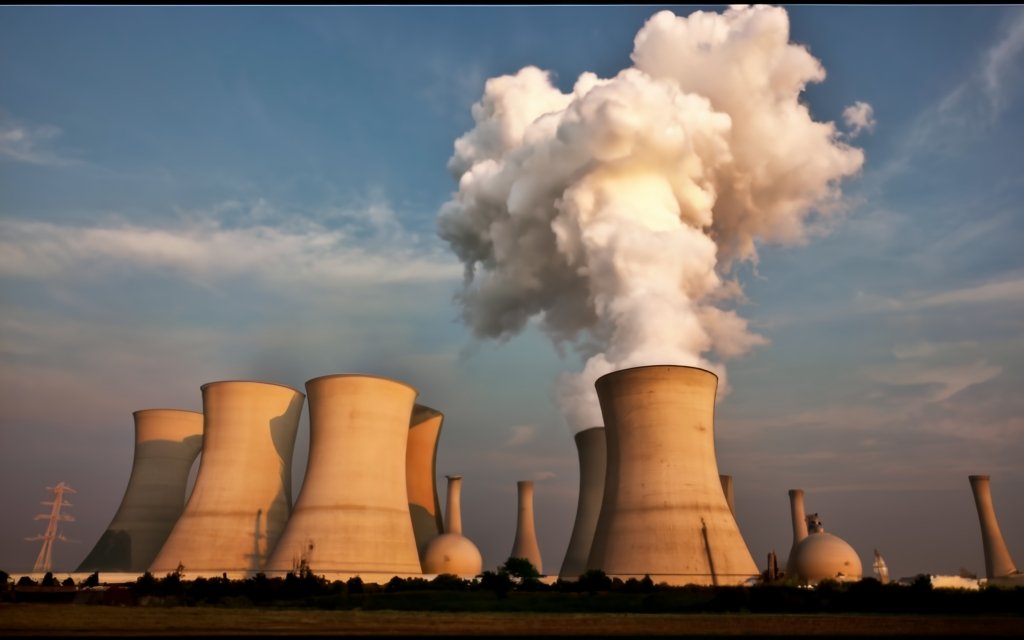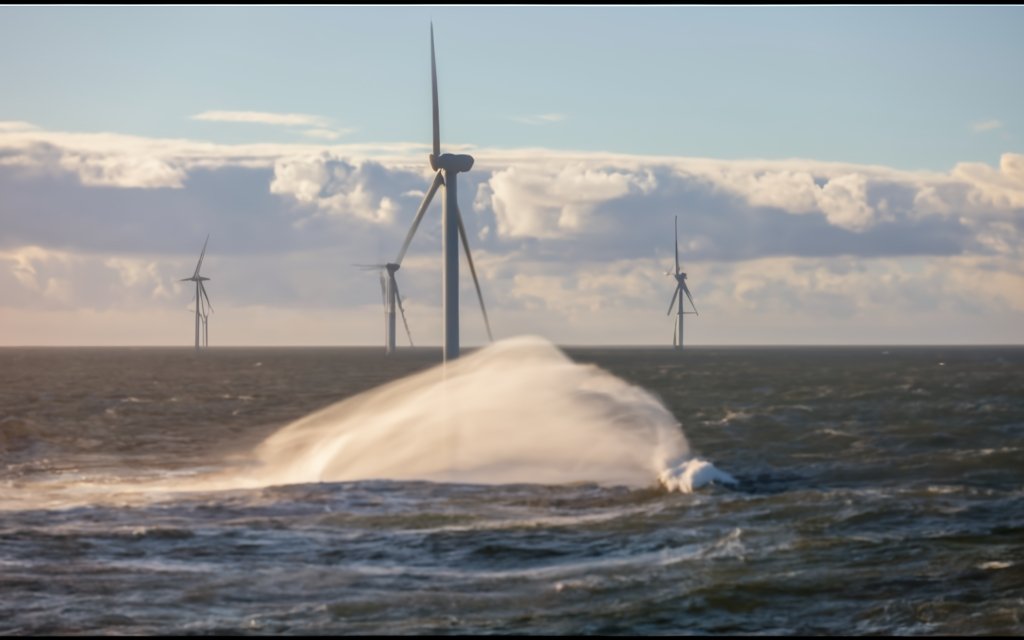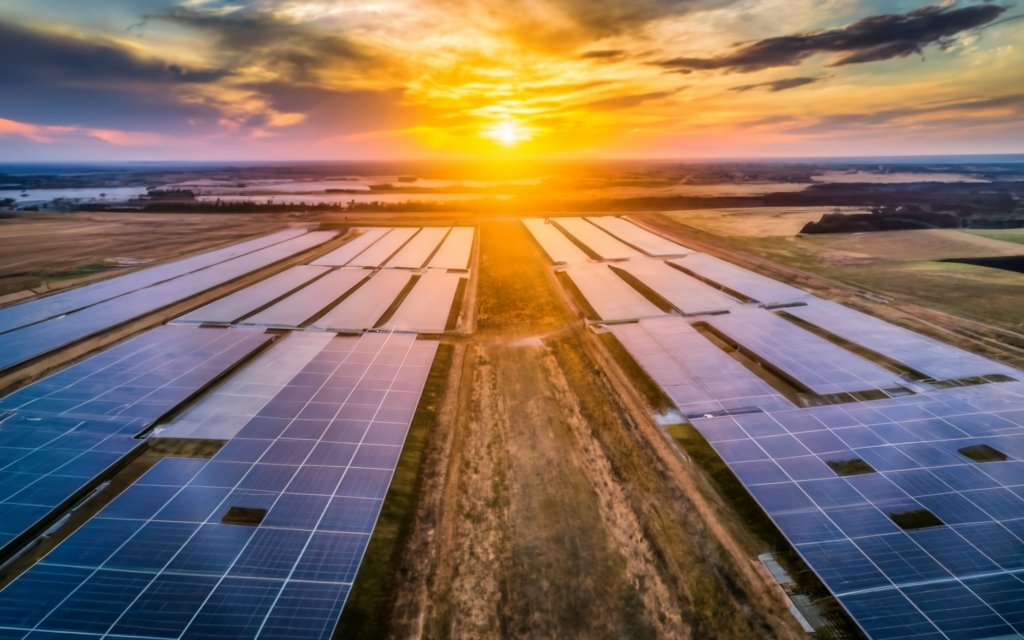1. Solar Energy:
Harnessing the Power of the Sun: Solar Energy.
Equipped with minimal moving parts, solar energy systems offer a quirkiest blend of simplicity and reliability. By simply setting up panels in areas receiving ample sunlight, we capture and convert solar power into electricity. Imagine powering your household using just light from our ultimate cosmic energy source – the sun! Painting a picture that once seemed like science fiction but is now a mainstream reality.
• Solar PV Systems: They efficiently convert sunlight directly into electricity using photovoltaic cells. So, if you’ve overcome the dilemma of pollution caused by traditional electrification methods and are searching for cleaner alternatives, look no further.
• Concentrated Solar Power (CSP): CSP uses mirrors to focus the sun’s light energy onto a small area to generate steam, which then drives an electric generator. It’s awe-inspiring how such intricate processes effortlessly pave way for effective energy solutions.
The upfront cost might be daunting; however, considering their long-term benefits and robust efficiency levels unmatched by fossil fuels make this investment too significant to overlook.
Be it securing energy independence or reducing greenhouse emissions; solar power undeniably holds powerful merits over conventional fossil fuels. The world is steadily shedding its dependence on environmentally degrading fuel sources – climbing aboard this sun-powered revolution has never been more urgent!
- Pros: Abundant, clean, renewable.
- Cons: Intermittent, requires large upfront investment.
2. Wind Energy:
Harnessing the power of the wind is not a new concept. For centuries, people have utilized windmills for different purposes, such as milling grain and pumping water. Today, however, we are realizing its true potential through wind energy as one of the most sustainable solutions to our increasing energy demands.
Wind power is produced by using large turbines to capture kinetic energy from the wind and converting it into electricity. This method provides several tremendous advantages:
– Renewable and Environment-friendly: Unlike fossil fuels, wind won’t run out anytime soon. As long it exists on earth; we’d have a perpetual source of clean energy that emits no greenhouse gases or pollutants during operation.
– Cost-effective: Over time, with advancements in technology and larger-scale production capabilities, the cost of generating electricity from wind has significantly decreased making it competitive with traditional fossil fuel sources.
In embracing this alternative source of power generation entirely independent of fossil fuels we’re not only contributing to preserving our environment but also towards creating an economically feasible solution owing resilience against volatile fuel prices. Indeed, investing in harnessing the forces that nature bestows upon us is rewarding – both for us today and future generations tomorrow!
- Pros: Abundant, clean, renewable.
- Cons: Intermittent, requires specific geographic conditions.
3. Hydropower:
Unleashing the Power of Water.
Imagine harnessing the force that carved out the Grand Canyon over millions of years, channeling it into an energy source that can power our cities and industries. Enter Hydropower – one of humanity’s oldest methods of generating power, yet remains unsurpassed in its elegance, efficiency, and eco-friendliness.
Hydropower taps into the earth’s natural water cycle to generate electricity. It uses a simple principle: flowing or falling water drives a turbine and generates electrical energy. Here’s what makes hydropower remarkable:

– Unmatched Efficiency: Modern hydroelectric plants achieve efficiencies above 90%, far ahead than some contemporary energy sources.
– Exemplary Grid Stability: Unlike solar or wind, hydropower can offer round-the-clock uninterrupted power supply contributing immensely to grid stability.
– Green Energy Champion: By choosing water over fossil fuels for generating electricity, we reduce greenhouse gas emissions greatly.
In times where climate change is not just a warning but an immediate danger, revitalizing our commitment to hydropower could be pivotal in powering a greener future. The next time you marvel at rushing waterfalls or meandering rivers remember – therein lies an age-old solution to modern complexities!
- Pros: Clean, renewable, reliable.
- Cons: Can disrupt ecosystems, limited availability.
4. Geothermal Energy:
Harnessing the Earth’s very own heat as an energy source might sound like science fiction, but geothermal energy is a genuine alternative to fossil fuels that shines with potential. This form of renewable energy leverages the thermal power trapped within the planet’s crust, turning it into clean electricity, and even direct heating solutions.
Our modern world provides us with ample opportunities to exploit this naturally replenishing resource.
• The use of geothermal heat pumps for residential heating and cooling drastically reduces CO2 emissions.
• Large scale power plants can generate significant electricity minimizing dependence on fossil fuels.
• It could even be used to heat road surfaces in winter months – imagine self-de-icing roads!
It becomes more fascinating when we realize that it’s not just scientifically possible; several countries such as Iceland and New Zealand are already running on geothermal energy. While initial setup costs may be high, the long-term savings both economically and environmentally are staggering.
The earth is much more than solid ground beneath our feet; it can also be seen as a giant battery waiting for us to tap into its green, pristine power!
- Pros: Clean, renewable, reliable.
- Cons: Limited availability, requires specific geological conditions.
5. Bioenergy:
Bioenergy, a significantly underappreciated alternative to fossil fuels, holds unique potential in the quest for a sustainable energy future. This green powerhouse gives us the ability to control our waste disposal and concurrently make strides towards reducing greenhouse gas emissions – an eco-friendly two-for-one deal that’s particularly hard to come by.
Uniquely among renewable energies, bioenergy is derived from biological materials typically regarded as waste products. These range from industrial plant waste and crop residues to municipal solid waste and landfill gases.
In transforming what’s traditionally viewed as garbage into valuable energy sources, we not only tackle the persistent problem of waste management but also convert these ‘useless’ materials into economically useful resources. Imagine this – with just your kitchen scraps, landscaped yard trimmings or even manure from livestock farms, we could power our homes and cities!
Bioenergy isn’t simply another drop in the renewable energy bucket; it provides fundamental shifts in how we perceive resource use as a whole. Although areas such as agricultural intensification require careful monitoring (to prevent unintended adverse effects), the net benefits of embracing bioenergy are truly tremendous.
• Bioenergy promotes better waste management.
• It transforms ‘waste’ into economically beneficial resources.
• Bioenergy requires cautious handling due to occasional negative implications.
- Pros: Renewable, can be used for transportation.
- Cons: Can be unsustainable if not managed properly.
6. Nuclear Power:
Nuclear power, despite its controversial status, stands as one of the most efficient and reliable alternatives to fossil fuels. Significantly, it offers potent energy production with zero carbon emissions while in operation. With technological improvements and better safety measures, nuclear power can provide a considerable part of our future energy mix.
– Brilliant Energy Efficiency: Nuclear power’s standout feature is its exceptional energy efficiency. A single uranium fuel pellet approximately the size of a fingertip contains as much energy as 17,000 cubic feet of natural gas, 1780 pounds of coal or 149 gallons of oil.
– Impressive scalability: With potential for significant scalability, nuclear plants can generate vast amounts of electricity consistently; thus addressing both baseline and peak demands.
– Environmental Impact: When functioning correctly, it produces no greenhouse gases during operation and two-thirds less lifecycle carbon emissions than natural gas.

However, challenges such as waste management issues and historical accidents mean that the utilization of nuclear power triggers heated debate. Even so, simple dismissal isn’t constructive when we are exploring all available options to transition towards renewable sources effectively.
Advanced designs for reactors present compelling propositions to resolve safety concerns established by traditional models actively. Besides this fact lies another worthy consideration – sustainability via breeders’ reactors that reduce Uranium supply constraints by generating more fuel than they consume.
- Pros: Clean, reliable, high energy density.
- Cons: Produces radioactive waste, public perception concerns.
7. Hydrogen:
Hydrogen is often overlooked, but it’s a formidable contender in the race to find alternatives to fossil fuels. Though it is the most abundant element in the universe, hydrogen doesn’t naturally occur on Earth in large quantities or by itself, largely being found as a part of water (H2O) or hydrocarbons like methane (CH4). This poses unique benefits and challenges that could redefine our energy landscape.
Among hydrogen’s greatest advantages is its potential versatility. It can serve various functions—from powering vehicles with zero tailpipe emissions to storing excess renewable electricity.
Moreover, when used as an energy source, water vapor is released instead of harmful greenhouse gases or pollutants that are wreaking havoc on our planet. Imagine an economy thriving off a major clean-energy source!
– Hydrogen offers large-scale energy storage: Storing renewable power generated during off-peak times and using it later during peak demands.
– It boasts remarkable transportability: Hydrogen can be easily transported in liquid form or via pipelines over long distances.
– Its wide range of applications extends from households to industries: Besides fuels cells for cars, it has potentials in heating homes efficiently and supplying cleaner fuel for industries.
However, unlocking hydrogen’s full potential isn’t quite simple. Producing hydrogen from low-carbon sources still remains expensive compared to extracting from natural gas through steam reforming; not to mention the carbon capture challenge associated with it that requires further solutions.Can we unravel and traverse these complexities? Surely yes!
- Pros: Clean, versatile, can be stored.
- Cons: Infrastructure and production costs are high.
8. Ocean Energy:
The untapped energy potential stored within our oceans is an energy source that bears a wealth of promise. Ocean energy, or marine power as it’s also known, strategically harnesses the natural ebb and flow of oceanic tides, currents and waves to produce electricity.
Much like wind turbines capturing the wind’s kinetic power, devices placed near shorelines or on the sea bed collect and convert ocean movements into usable power.
• Waves can generate electricity through pressure changes beneath their surface.
• Tidal streams are driven by lunar gravitational pull and create predictable surges ideal for efficient electricity production.
• Ocean thermal gradients also cater to harvesting massive energies across differing temperature zones in our seas.
While capitalizing on these competing technologies may present initial setbacks in infrastructure cost, added complexity from harsh maritime conditions or environmental implications; their immense potential remains undeniable.
As innovation develops in pacing with global focus towards green energies, we could soon see Ocean Energy become a sustainable figurehead among alternative sources of energy.
As part of humanity’s endeavor towards green renewable energy strategies; tapping into the vast reservoirs of marine power constitutes another massive stride away from fossil fuel dependency. It indeed paints a tantalising vision for an electrified future harboured upon clean energy fronts such as these!
- Pros: Abundant, renewable, predictable.
- Cons: Technology is still in development, potential environmental impacts.
9. Carbon Capture and Storage (CCS):
One of the highly promising alternatives to fossil fuels lies in a technology known as Carbon Capture and Storage (CCS). Simply put, this process aims at collecting carbon dioxide emissions produced from industrial processes before they reach our atmosphere, and storing them deep underground.
This represents an extraordinary counter-action strategy against global warming, while permitting us to harness energy from fossil fuels much more cleanly than we do currently.

What makes CCS so appealing is that it addresses the concerns on both sides of the spectrum – dependence on fossil fuels doesn’t have to equate to irreversible harm for our environment. Old power plants can be retrofitted with advanced systems designed for capturing CO2 directly from flue gases.
Even better news? The infrastructure required for transportation and storage can repurpose existing networks already set up by oil companies.
– CCS reduces around 85-90% of CO2 emissions.
– Catching harmful greenhouse gas pre-emission prevents it entering our atmosphere.
– Utilizing existing resources accelerates transition towards cleaner energy sources.
Though still largely in experimental stages, developments in CCS are making leaps and bounds towards widespread practical application. As research advances in this field, it holds immense promise not only as an effective strategy against climate change but also as a tangible link between conventional fossil fuel usage and a clean sustainable future.
- Pros: Can reduce CO2 emissions from fossil fuel plants.
- Cons: Expensive, energy-intensive, potential for leaks.
10. Smart Grids:
Harnessing the power of Smart Grids is an exciting advancement in our quest for alternatives to fossil fuel. Unlike traditional electricity grids which are placidly one-way systems, smart grids create interactive ecosystems that can adjust and respond to changes in energy supply and demand.
Being ‘smart’, these grids communicate between different sections of a grid using digital technology to optimize the delivery and maintain stability.
Moreover, integrating renewable energies with smart grid infrastructures allows excessive generation of renewables like solar or wind power during peak times to be stored for later use. Besides, it remedies the unpredictability issue associated with green energies too by not just transmitting but also managing sudden power surges or fallouts effectively.
– Flexibility: With a broader communication bandwidth, smart grids effortlessly balance energy consumption across households and industries.
– Efficiency: The intuitive nature of this system eradicates power wastage significantly.
– Sustainability: They make better utilization of renewable energy sources thereby stepping up sustainability efforts dramatically.
By bridging the gap between producers and consumers in a more efficient manner, smart grids hold grand implications on reducing greenhouse gas emissions; truly exemplifying smarter living through innovative ways!
- Pros: Improve energy efficiency, reduce reliance on fossil fuels.
- Cons: Requires significant investment in infrastructure.
11. Wave Energy:
Harnessing the infinite power of ocean waves, Wave Energy stands as an impressive alternative to fossil fuels just waiting to be tapped into. This form of renewable energy uses the surge of ocean waters – which is generated by differences in temperature levels among different layers – to generate electricity. The gravity-driven, incessant motion of waves holds a massive potential for sustainable electricity generation.
The process begins with wave-energy technologies such as buoys, turbines or undersea templates set-up at sea or onshore capturing and converting kinetic energy from waves into usable power. Some compelling advantages include:
• Zero emission: In stark contrast to fossil fuels, wave energy does not produce harmful greenhouse gases.
• Relative consistency: Unlike wind or sun which can be intermittent, there’s constant movement in the oceans.
• High Efficiency: Large amounts of potential power can be harnessed from small surface areas.
While it might still be grappling with challenges similar to other renewable energies (economic feasibility, environmental impact), given continued development and improved technology methods we may soon witness wave energy becoming a mainstream part of our global efforts towards sustainable living.
- Pros: Abundant, predictable, can be used in conjunction with other renewable sources.
- Cons: Technology is still in development, potential environmental impacts.
12. Tidal Energy:
Harnessing the immense and consistent power of the ocean tides, tidal energy stands as a front runner in sustainable power alternatives. Unlike wind or solar energy whose factors are variable and sometimes inconsistent, the rise and fall of ocean tides are certain, reliable entities that can be harnessed for steady energy production.
• Infrastructure: Installing turbines underwater at key coastal locations catch the strong tidal movements driving the machinery to generate electricity.
• Pros & Cons: On one hand, it’s an inexhaustible fuel source with zero greenhouse gas emissions. Moreover,predictability rates higher compared to some forms of renewables while providing significant generation potential . However,the high upfront cost, potential marine life disruption and localized availability pose challenges.

This clean technology not only diversifies our portfolios but also fosters innovation reshaping ways we think about fuel consumption. Thus, through advancements in engineering design googles and appropriate location selection, tidal energy could potentially become an invaluable component of global renewable energy mix.
- Pros: Predictable, can be used in conjunction with other renewable sources.
- Cons: Limited availability, requires specific geographic conditions.
13. Algae-Based Biofuels:
As we navigate the urgent quest for cleaner and more sustainable energy options, algae-based biofuels are rising as a promising alternative to fossil fuels.
This seemingly humble and often overlooked aquatic organism thrives on sunlight and carbon dioxide, transforming them into stored energy – making it renewable, abundant and far less destructive to our ecosystem than harnessing coal or oil reserves.
Despite its vast potential benefits, developing cost-effective processes for algae biofuel production is not without its challenges. Yet the recent technological advances hold promise.
– Algae’s photosynthetic efficiency surpasses terrestrial crops; they convert solar energy into chemical energy at an astonishing rate.
– Biofuels derived from algae alleviate land use concerns usually associated with other biomass fuel sources since they can be grown in wide ranging conditions including saline water, wastewater or even carbon-dioxide rich industrial exhaust gases.
– The processing of algae to extract valuable oils can also yield bioproducts like protein-rich animal feed or even bioplastics.
Life as we know it might indeed hedge closer to sustainability with such alternatives in play – Algae could potentially drive us forward into a future where refueling doesn’t equate to planet depletion!
- Pros: Renewable, can be grown on non-arable land.
- Cons: Technology is still in development, production can be energy-intensive.
14. Methane Hydrate Extraction:
Methane hydrate extraction is a fascinating, yet complex option in the pursuit of alternatives to fossil fuels. This seemingly futuristic technology involves tapping into deposits of methane hydrates—crystalline formations found beneath the seafloor and arctic permafrost—which remarkably store copious amounts of methane, a potent source of energy.
The allure behind this new-age resource stems from more than mere abundance; recent advancements in extraction methods present an opportune moment for harnessing methane hydrates.
Scientists are working on safe and economically viable techniques such as depressurization, thermal stimulation, and even replacing methane within the crystals with carbon dioxide—which could help mitigate greenhouse emissions.
– Depressurization extracts by manipulating pressure levels.
– Thermal stimulation involves increasing temperature around deposits
– Carbon dioxide exchange offers a green solution by trapping harmful CO2
Beyond its potential as an energy resource, studying these hydrate formations can also provide invaluable insights into global climate patterns—making methane hydrate extraction not just feasible but imperative for our sustainable future.
- Pros: Abundant, could be a significant new source of energy.
- Cons: Technology is still in development, environmental concerns.
15. Artificial Photosynthesis:
Presenting artificial photosynthesis – nature’s very own wonder, but better. This technology is indeed a masterpiece of human ingenuity and a powerful alternative to fossil fuels that thrives on the power of sunlight.
Similar to how plants absorb sunlight and convert it into energy during natural photosynthesis, this engineered process absorbs solar energy and carbon dioxide, not just to produce oxygen like plants do, but also hydrocarbons—a rich source of renewable energy.
With this innovation, we’ve come full circle back to Mother Nature for inspiration while upgrading her design with our engineering prowess. Though still in its infancy stage and confronted with some challenges like cost-efficiency issues in scaling up for mass adoption—there’s no denying the huge potential that artificial photosynthesis brings along.
– Through harnessing sun power, it offers an unlimited supply of raw material.
– Mimics highly efficient natural processes which have minimal environmental impacts.
– Converts CO2 into hydrocarbons aiding in reducing global warming.
Amidst a bleak landscape where climate change and carbon emissions reign as significant predicaments—artificial photosynthesis emerges as a promising beacon.
A true game-changer and force to reckon with—it’s slated to redefine our future ‘going green’ endeavours by offering clean renewable energy sourced directly from the sun. The dawn of a new era has indeed begun!
- Pros: Could potentially convert sunlight and water into hydrogen fuel.
- Cons: Technology is still in development, efficiency is low.
16. Advanced Batteries:
The realm of advanced batteries holds immense potential when it comes to viable alternatives to fossil fuels. Not just your customary AA or AAA, these advanced batteries are intricate in functionality and lean on cutting-edge technology for their operation.
These power-packed energy units are revolutionizing the way we store and distribute energy, with implications stretching from automotive industry through smart grids to our everyday electronic devices.
Advanced batteries spanning from Lithium-ion, Solid-state, to Zinc-air versions have essential features making them prime candidates in the search for sustainable energy sources.

They’re characterized by high-energy capacity & density, longevity, faster recharge cycles apart from being eco-friendly – a much-needed nod towards reducing carbon emissions that traditional energy sources entail.
– Lithium-ion batteries have taken center stage due to their high energy efficiency coupled with relatively minimal loss of charge when not in use.
– Solid-state batteries replace liquid or gel-type electrolytes with solid compounds proving safer and promising higher performance metrics.
– Zinc-air batteries bring an economical angle using oxygen from ambient air for its operation leading towards natural resources conservation effort.
Decoding these advancements might seem complex but recognizing their role unlocks societal strides towards sustainable living while lessening dependency on depleting fossil fuels. The deployment of advanced battery technology across sectors makes this race all the more exciting and consequential!
- Pros: Could improve the storage of renewable energy.
- Cons: Technology is still in development, cost is high.
17. Demand Response:
Demand response has quietly revolutionized the energy sector, presenting an exciting and practical alternative to fossil fuels. In essence, it is a broader term for methods used by energy providers to incentivize consumers to reduce their consumption during peak hours or when the energy grid is under significant stress.
With growing concerns about overdependency on fossil fuels, demand response offers innovative solutions for both consumers and utilities alike.
One outstanding advantage of this model is its inherent propensity for promoting cleaner sources of energy. When put into practice, several things happen:
1. Peak demand periods are managed effectively.
2. Clean renewable sources like solar and wind power get promoted as they’re often most reliable during these high-demand times.
3. Lower electricity prices throughout off-peak times encourage increased use of renewable sources.
Through this approach, not only does the environmental footprint decrease but also creates enormous potential for cost savings on all ends – producers aren’t forced to ramp up costly production measures and consumers experience lower electricity rates overall; a win-win situation indeed!
- Pros: Can reduce peak electricity demand and reduce reliance on fossil fuels.
- Cons: Requires consumer participation, can be difficult to implement.
18. Energy Efficiency:
Energy efficiency, fundamentally, is about producing the same outputs with less energy input. What’s not to love about this elegant solution? It produces less carbon emissions, promotes lower operating costs and instills greater sustainability.
While installing wind turbines or solar panels may be out of reach for some households or businesses financially, implementing energy efficient practices or upgrading to more efficient appliances are options that are often accessible and will pay off in the long run.
Adopting energy-efficient technologies does more than just saving money on utility bills; it links directly to reducing our dependence on fossil fuels. Below are a few notable aspects:
• Lighting: Switching from traditional incandescent bulbs to LEDs can result in up to 75% decrease in energy usage.
• HVAC Systems: An Energy Star-certified system could save up to 15% on heating and cooling costs.
• Appliances: Using Energy Star-rated appliances can significantly cut down power consumption without compromising functionality. In certain cases, these devices consume around 50% less electricity!
Shifting our focus from merely generating more power towards utilizing it optimally unveils an exciting layer of tackling the climate crisis equation. It is high time that we fully utilize the potential of this underrated soldier in our battle against greenhouse gas emissions!
- Pros: Can reduce energy consumption and greenhouse gas emissions.
- Cons: Can be expensive to implement, requires behavioral changes.
19. Public Transportation:
The allure of owning a private vehicle is tangible; the seductive hum of your engine, the plush leather seats, and the sense of independence that comes with it.
And while it’s certainly comfortable to travel in your own car, public transportation stands as an unsung hero in the fight against over-reliance on fossil fuels.
With massive potential for reducing carbon emissions and traffic congestion, this ubiquitous form of transport most certainly deserves our consideration.
– Public buses, trams or metros can accommodate around 40 times more passengers than a single car occupying similar road space.
– Trains are even more efficient: one train carriage can carry hundreds of passengers.
Further embracing public transportation not only helps reduce total fuel consumption but also frees up city streets from clogs of traffic jam-induced pollution. For short distances within cities or towns, cycling or walking could serve as effective alternatives too – they promote physical fitness while being completely free from emissions.
The shift towards public modes needs blend of policies including urban planning improvements and making them safer and more appealing to use.
Urban design can indeed go hand-in-hand with sustainability if we emphasize building accessible mass transit systems instead of wide highways catering mostly to private vehicles.
This starts by incentivizing commuters through discounts, integrating technology into ticketing systems for convenience & better management, improving comfort & safety standards within these services and creating awareness about their environmental benefits.
- Pros: Can reduce car emissions and reliance on fossil fuels.
- Cons: Can be inconvenient and expensive to implement.
20. Walking and Cycling:
In a world where carbon footprints are of major concern, choosing non-fossil fuel alternatives like walking or cycling presents significant benefits. Often overlooked as primitive or inconvenient, these modes of transport can unlock a myriad of advantages that far surpass their fossil-fueled counterparts.
Firstly, walking and cycling offer substantial environmental benefits; they generate zero emissions, helping to purify our air and combat global warming on a personal scale. Not only does this reduce reliance on finite resources such as gasoline but also decreases harmful pollution levels.
– Walking requires no equipment or external energy: just your own two feet.
– Cycling increases your distance capability whilst still producing zero emissions.
Yet the benefits stretch beyond the environment: for individuals, adopting these practices nurtures both physical health and mental well-being due to regular physical activity combined with exposure to natural surroundings – an antidote to our increasingly indoor-oriented lifestyle.
Engaging in walking or cycling is not only a step towards sustainable living but also fosters community spirit by reducing traffic congestion and noise pollution — enhancing the quality of life in residential areas.
Next time you consider reaching for car keys or booking that Uber ride, give some thought to strapping on sneakers instead – you could be supporting your health, saving money and protecting Earth’s precious resources all at once!
- Pros: Zero-emissions, healthy, can reduce traffic congestion.
- Cons: Not always practical, can be dangerous in some areas.
Conclusion.
In conclusion, alternatives to fossil fuels such as wind, solar, and hydroelectric power present promising solutions for a sustainable future. The investment in these renewable energy sources would not only mitigate the damaging effects of climate change but also stimulate economic growth and job creation.
However, it is crucial to overcome the challenges related to their integration and storage. Governments, organizations, and individuals must actively support research and development in this field to expedite the transition from fossil fuels. Let’s strive for a cleaner and more sustainable world by embracing alternative energy sources today.
I am commitment to crafting compelling narratives and delivering insightful content continues to inspire and inform readers across various platforms. Explore her articles on AlternativesZone.com and FactAfterFact.com to experience a rich tapestry of knowledge and discovery. Here I Analyze and Test the products and services together with my team before we recommend them to our users. Nice Reading Here!











